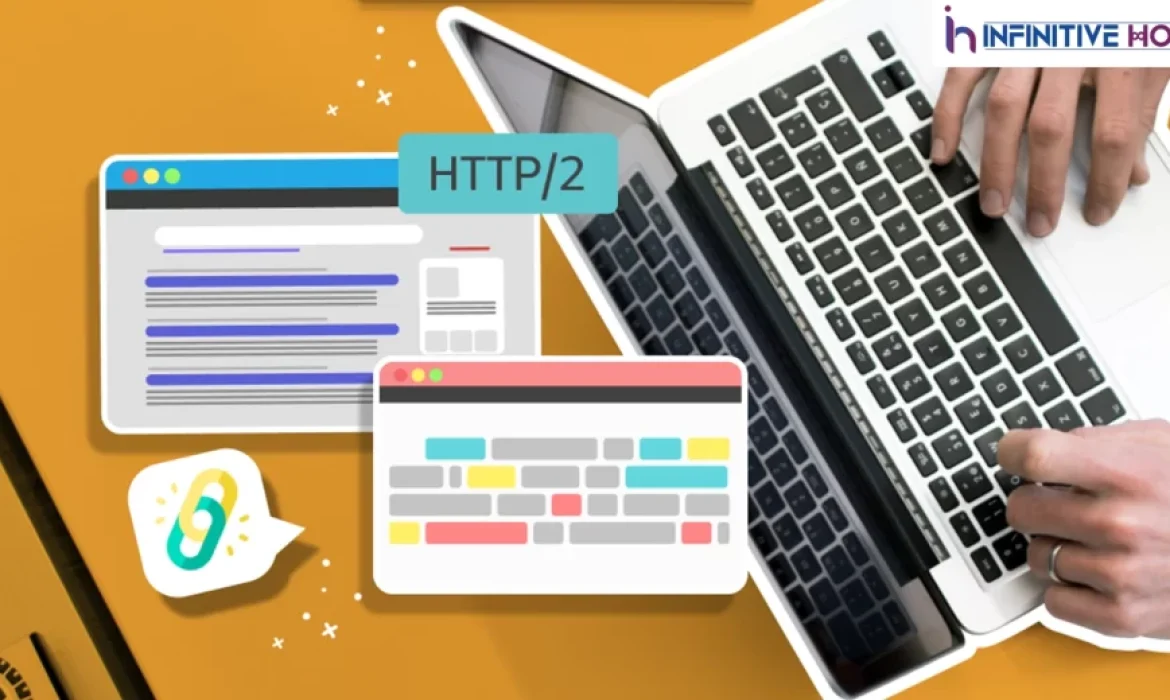The World Wide Web is built on the Hypertext Transfer Protocol (HTTP), a basic, restricted, and ultimately uninteresting application layer protocol. HTTP/2 facilitates the retrieval of network-connected materials available throughout the cyber globe and has grown over the decades to provide a quick, secure, and feature-rich channel for digital communication.
At Infinitive Host, we’re obsessed with optimising the load times of the websites hosted on our platform, and we’ve previously published numerous guides on the subject. So take a look at this comprehensive information resource that explains HTTP/2 to end-users, developers, and businesses pursuing innovation. You’ll learn all you need to know about HTTP/2, from the fundamentals to more advanced subjects.
Read More : How HLS Format Works : What are the pros & cons of using it ?
HTTP/2-Meaning and Definition
HTTP/1.1 is the first version of the Hypertext Transfer Protocol (HTTP), released in 1999. Its objective is to optimise website speed by improving the way HTTP is represented “on the wire.” Additionally, HTTP/2 originated as Google’s SPDY protocol, which was meant to alleviate a number of the performance issues associated with HTTP/1.1. The fundamental features of SPDY have been included in HTTP/2, where they have been enhanced by the worldwide Internet community and established as an Internet Standard.
Benefits of HTTP/2
HTTP/2 includes numerous new capabilities, all of which aim to improve the speed with which your website’s pages load for your users.
- Header Compression
Modern websites rely on various external materials, including photos, CSS, JavaScript, and typefaces. Each time a browser requests one of these items, the request includes an HTTP header. When the server returns the asset to the browser, it sends an HTTP response header along with it. That is a significant amount of overhead for a regular web page.
HTTP/2 requires that all HTTP headers be delivered in a compressed format, minimising the amount of data transferred between the browser and the server. HTTP/1.1 does not support header compression in any way.
- Multiplexing
Multiplexing is likely HTTP/2’s most crucial advantage. HTTP/1.1 necessitates the establishment of a separate TCP connection for each request. By comparison, multiplexing enables a browser to send several requests over a single TCP connection.
The issue is that a browser can only open a certain number of TCP connections at any given moment. This implies that, with HTTP/1.1, a browser can only load a single resource at a time—each item on a web page is returned to the browser in sequence. Multiplexing enables a browser to request all of these items concurrently. This leads to a massive increase in performance.
- Stream Priority
Browsers use stream priority to designate which assets they want to get first. For instance, an HTTP/2-aware browser can employ stream priority to load a page’s HTML first, followed by CSS, JavaScript, and lastly, image assets. This arrangement enables the browser to produce the page in the shortest feasible time.
Consider stream priority as an additional optimisation on top of multiplexing. Multiplexing enables the transmission of several requests over a single TCP connection, while stream priority enables the answer order to be defined. While multiplexing reduces much of the TCP overhead, it does not affect server-to-browser transfer times. This is the purpose of stream priority.
- Server Push
HTTP/2 Server Push enables our edge network to return web assets to your browser before it is aware that it requires them. This reduces page load times by avoiding redundant round trips. For example, when a browser requests an HTML page, you may “push” all of the CSS style sheets, image resources, and other components into that web page. Then, after the browser parses the HTML and locates all of those assets, they are automatically loaded into the browser’s local cache. This prevents additional server queries.
Wrapping Up
HTTP/2’s dominance and supremacy in the cyber realm are unavoidable. The application protocol appears to be on track to continue the legacy of HTTP1.1, which revolutionised the Cyber world with its ground-breaking data transport capabilities. HTTP/2 outperforms its predecessors technologically, greatly beyond the innovation gap set by HTTP1.1 versus standard data transfer protocols at the time. However, activating HTTP/2 is merely the first step in a long path toward page performance optimisation.
The internet industry needed to replace the old HTTP1.1 protocol with one that offered more benefits to the common user. The shift from HTTP1.1 to HTTP/2 is almost completely motivated by the desire to maximise technological developments’ potential to achieve those expectations. Furthermore, the web is becoming slower from the standpoint of online companies and internet users as it becomes increasingly clogged with useless media-rich material.
Therefore, HTTP/2 modifications are being created to improve the efficiency of client-server data exchange in order to help online companies reach their target market efficiently and internet consumers access better web content faster. Additionally, the web is more situational than ever before.


.webp)



